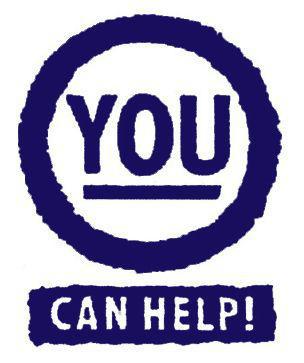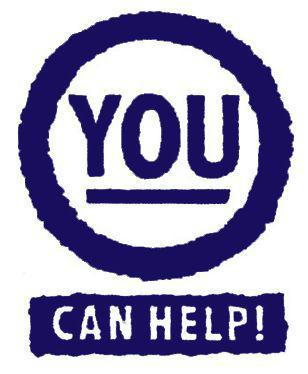SAS Urban Survival Handbook (91 page)
Read SAS Urban Survival Handbook Online
Authors: John Wiseman
Tags: #Health & Fitness, #Reference, #Survival, #Fiction, #Safety, #Self-Help, #Personal & Practical Guides, #General, #Survival Skills
When out alone
Plan your routes sensibly. Don’t go out for the evening without planning how you will return. Arrange to stay overnight or to travel with a friend or two. You should feel relatively free to move around as you choose—or you might as well stay at home and barricade the doors and windows!
Most common sense precautions can become automatic—a normal, necessary part of everyday life just like eating, sleeping or working:
- ◑ Plan ahead. Know the safest route. Carry the phone numbers of a reputable taxi company and enough money to cover the fare. Carry this money separately from your other cash.
- ◑ Carry money (or a phonecard) for public telephones.
- ◑ Don’t use short cuts across wasteland, down ill-lit alleyways with lots of hiding places, through underground walkways, along canal paths, through car parks.
- ◑ If you are driven home by a friend or taxi driver, ask them to wait until you open your door and go inside.
- ◑ Don’t display expensive clothes, bags or jewellery—cover them up.
- ◑ Walk facing the traffic to avoid cars pulling up behind you.
- ◑ Avoid eye-to-eye contact as you pass people, but still try to assess their intentions.
- ◑ DON’T look down as if nervous! Hold your head up and look about at all times.
- ◑ At night, on your own in an unpopulated area, don’t get close to a car when the driver asks for directions.
- ◑ Don’t let ANYONE who approaches you for any reason get within arm’s length.
- ◑ Don’t accept lifts from strangers—even those claiming to be ‘minicabs’.
- ◑ Cross the road if you see a group of people coming down the street towards you.
- ◑ Walking with a large dog—even if you ‘borrow’ one from a neighbour—should deter most attackers.
- ◑ Look at your shadow on the ground as you walk past a street lamp. If anyone were approaching silently from behind, their shadow might give you a second or two’s warning.

If you see someone under threat in the street, and don’t feel able to intervene, at least call the police at the first opportunity. A group of people could use their numbers to discourage an attacker.
BEING FOLLOWED
If you think someone is following you, cross the street. See if the suspect does the same. If they do, cross back. If they show any sign of still following you, walk up to a house and fumble with your keys. If it’s occupied, ring the doorbell and ask for help. Try to get to a place where there are other people or stop at a phone and call the police. Go into a shop or, at night, a takeaway restaurant or public house. If possible, leave by another exit. It may be a good idea to stop and look in a shop window. You may be able to study the behaviour of the person, reflected in the glass. Try not to panic—don’t run unless it is to a place of definite safety nearby.
REMEMBER
Going up to a strange house and asking the occupants for help may also be dangerous – especially for a woman on her own. The owners of the house may not be friendly or may themselves be suspicious or afraid of YOU – an unexpected caller!

If someone comes to your door and says they are being followed or have been attacked, give them the benefit of any doubt. You don’t need to let them into your home—but don’t just send them away (which is common). Call the police or an ambulance.
Walking on the road side of a pathway—or even in the road—may be safer when there is no traffic. Don’t walk close to doorways and bushes where all someone has to do is grab you. Make it more difficult for them!
Try to act as if you are very confident (even if you’re terrified). Walk purposefully. Keep your hands out of your pockets—ready to use to defend yourself. Looking confident implies you can ‘take care of yourself’ and may put off an attacker. DON’T keep glancing nervously over your shoulder. DON’T hang your head and look at the ground. Keep your head UP—looking and listening at all times.
DRIVING
 Being in a moving car – except from the dangers associated with using roads – makes you safer than you might be on foot. But if your car breaks down, you may become more vulnerable to attack.
Being in a moving car – except from the dangers associated with using roads – makes you safer than you might be on foot. But if your car breaks down, you may become more vulnerable to attack.
Plan your journeys properly, especially through unfamiliar territory. Always have a map handy. Always make sure that your car is working properly and that you have enough petrol for the journey.
Try to let someone know where you’re going, and at what time you can expect to arrive. It would be sensible to join a major breakdown service. Try to park in busy well-lit areas.
In isolated, unfamiliar or badly-lit areas:
- ◑ Keep doors locked while driving.
- ◑ Keep windows closed.
- ◑ Only stop in an emergency.
- ◑ Don’t get out of the car in areas where you wouldn’t choose to walk alone—unless you have to.
- ◑ Have a good look round before getting out—don’t pull up near dark doorways or bushes.
- ◑ Think (more than) twice before giving a lift to strangers.
- ◑ If you break down, either look for a telephone (unless you have one in your car) or, at night, lock yourself into your car if you feel safer. Offers of help may not be genuine.
- ◑ Beware large dimly-lit carparks and multi-storey carparks, especially at night.
- ◑ If you see an accident or someone whose car has broken down—DON’T get out. It may not be genuine.
REMEMBER
It’s a good idea to carry a small amount of spare petrol in an approved petrol can. In hot weather, a can of water could prove invaluable.
- ◑ If you think you’re being followed—take the simplest route to a busy well-lit area or aim for a police station, a familiar public house, a hospital.
- ◑ Don’t have valuables in sight in your car. When you stop they may attract someone’s attention.
- ◑ If you carry money or valuables on a regular basis—AVOID always using the same route.
- ◑ Never leave any valuables in your car when you park. Lock things out of sight.

If you see an accident or someone having trouble with their car in an isolated spot, you don’t need to stop. DON’T get out of the car. With your doors locked and a window only partially open, drive alongside and offer to phone for help as soon as you reach a telephone (or stop further on and use a car phone, if you have one). If you prefer, signal to the driver as you pass that you will call for help from the nearest public telephone.
If you are stopped
Someone may step out into the road and make it necessary for you to slow down—or stop. If you haven’t already done so, immediately lock all doors and close windows as you approach. Change to a lower gear—ready to accelerate away if there is any sign of danger. At night, use your headlights to give you a good view of whatever is happening.
If you must stop, do NOT switch off the engine. Do NOT get out of the car until you are sure there is no danger.
If you really are not sure that the emergency is genuine, drive past—swerving if necessary—and phone the police from the first telephone you can find. If the emergency WAS genuine, you have at least summoned help.
HITCH HIKING
There are dangers from both sides – for the driver and the passenger. As a general rule, hitch hiking alone – especially for a woman, especially at night – is CRAZY. Equally so is for a person alone in a car to give a lift to a total stranger. Most advice that can be given works both from the driver’s and the hitch hiker’s point of view.
Hitch hiking is rare in cities during the day except on exit roads to major destinations. Depending on how you look at life, it’s a legitimate way of getting about if you have no other choice. Unexpected passengers may prevent a driver from being lonely or falling asleep on a long journey. ALWAYS assess the risks.
REMEMBER
Use YOUR COMMON SENSE! Don’t hitch hike alone unless you really are confident you can handle any kind of physical threat. Drivers on their own should NOT pick up passengers. Hitch hiking is not legal everywhere.
When driving:
- ◑ A hitch hiker or hitch hikers may be planning to rob a driver or damage/steal the vehicle.
- ◑ It has been known for female passengers to attempt to demand money from male drivers by blackmail.
- ◑ If you give someone a lift and can’t get rid of them again—pretend the car has broken down, as realistically as possible. Choose a busy location.
- ◑ If threatened with a knife or other weapon, it may be wise to do whatever they ask.
- ◑ A risky tactic may be—if the road surface is good and there are no vehicles behind you—to slam your brakes on and do an ‘emergency stop’, in a bid to escape.
When hitch hiking
- ◑ It’s very common for women hitch hiking alone to be expected to submit to some form of sexual act ‘in return for’ being a passenger in a vehicle.
- ◑ Men driving on their own have been known to overpower and abuse more than one female passenger at a time.
- ◑ A lot of modern cars have central locking (all the doors can be locked at once by the driver) or childproof locks which can only be opened from the outside.
- ◑ NEVER sit between two strangers in a car.
- ◑ ALWAYS make sure you can reach and open a door.
- ◑ If a car stops to give you a lift and you don’t feel at all sure about accepting the lift, say that you’ve changed your mind.
- ◑ Take the number of a car whose driver threatens you in any way and report the incident to the police.
REMEMBER
In most countries the police are not very sympathetic towards women who hitch hike alone. It may be unfair, but they are considered to have taken an unnecessary risk.